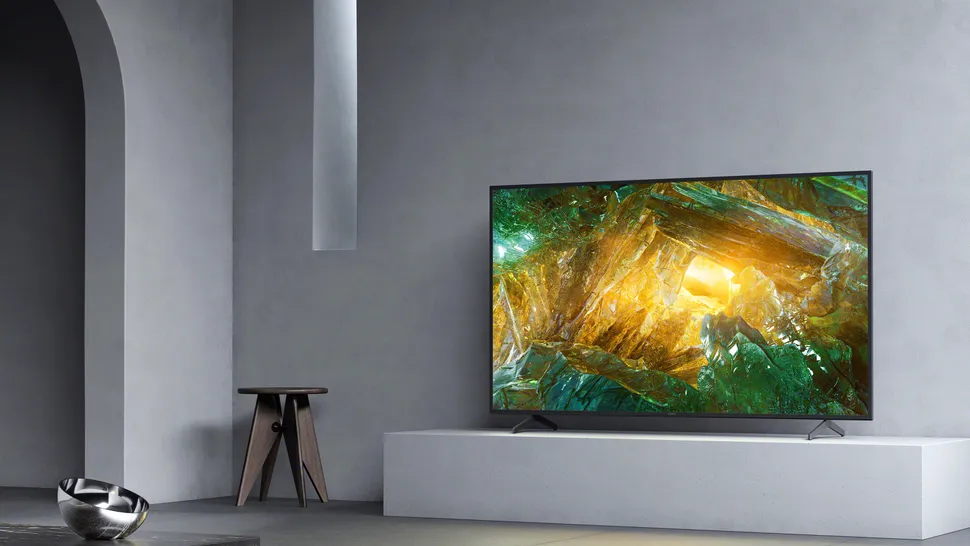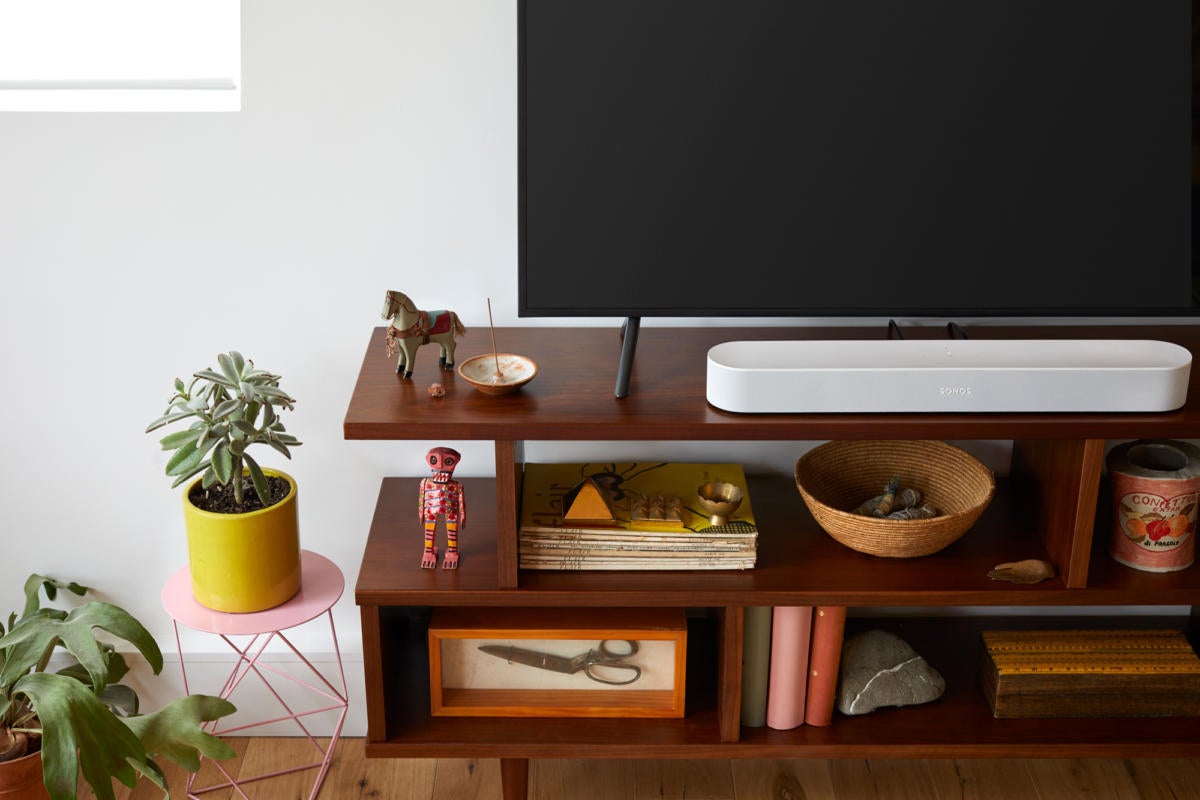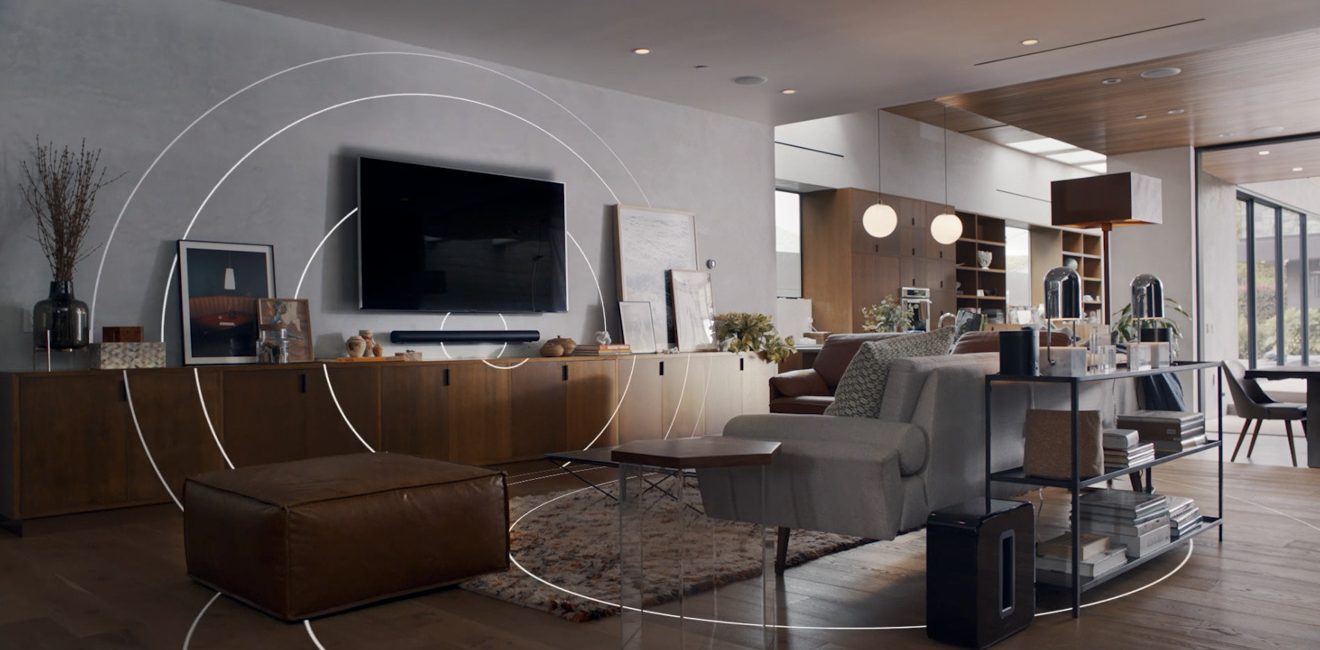What is a soundbar?
If you own a TV at home, chances are your TV's a flat-screen TV. The problem with flat screen TV is that you also get flat sound. The built-in speakers can’t reproduce dialogue clearly, much less deliver convincing explosions, car crashes and all the other mayhem that keeps us riveted to our favourite movies and TV shows.

Image credit: Sony
TV speakers are not only undersized and underpowered, but they’re also almost always aimed in the wrong direction, firing sound downward or toward the wall behind the TV. It’s no wonder everything comes out indistinct and out-of-focus.
Enter the sound bar, whose goal is to provide a sonic experience that more closely matches the TV’s lifelike picture. Equipment makers use a variety of methods to achieve that goal, and pretty much any sound bar you choose is going to sound better than your TV’s speakers. A lot better.
Can I just get any sound bar then?
Sound bars have exploded in popularity in recent years, and the number of models has likewise exploded. So we’ve put together this buying guide to help you quickly figure out which sound bar might work best for you.
A sound bar is an all-in-one speaker system that delivers high-quality TV sound without requiring the space, complexity, and expense of a home theater receiver and surround sound speaker setup.
A sound bar’s long, slender cabinet contains two or more speakers and may provide either stereo or surround sound. Some sound bars come with a separate subwoofer for producing deep bass, which adds impact to movie soundtracks and music, such as the Sonos Arc and Sonos Beam.

The Sonos Beam is a 3.0 speaker that produces stereo sound.
When shopping, you’ll run across sound bars from nearly every audio company, as well as most TV makers. A sound bar made by the same company that built your TV may be a perfect match cosmetically or offer other compatibility benefits. But for pure sound quality, you’ll probably do better with a model from a company whose main focus is audio gear.
Pro-tip: Sound bars come in all different shapes and sizes. Some can be mounted directly onto the wall, while others are made to sit beneath your TV or rest right on top of your entertainment stand. Part of choosing the best sound bar for your needs involves taking measurements of your space. Nothing’s worse than unpacking an awesome piece of equipment only to find that it doesn’t suit your TV and stand.
Our advice? Measure the length, width, and depth of your flat-panel TV and stand before shopping for a sound bar. Then use this info to help guide your search.
Where do you plan to put your sound bar?
Knowing where you’re going to place your sound bar will immediately simplify your decision and narrow down your choices. There are two basic options. If your TV is hanging on the wall you can mount the sound bar right below it for a neat, uncluttered look. If you're going this route, you'll want to consider how you'll hide the power cord and connection cable.

The Sonos Arc mounted below a TV. Featuring the accompanying Sonos Sub to the left.
On the other hand, if your TV sits on a stand or cabinet, you can set the sound bar in front of the TV. In that case, you’ll want to measure your stand and your TV's base to be sure the sound bar won't stick out from the stand at all.
You should also measure the space between the top of your stand and the bottom of your TV screen, to make sure the sound bar doesn’t block any of the screens. Some sound bars can be positioned either with the speakers facing forward or laying flat with the speakers facing up, for just this reason.

The Sonos Arc is a 3.0 speaker that produces stereo sound. Add on a Sub and let it take over the lows, releasing the Arc to focus on the mids and trebles.
Sound bars come in a wide range of sizes, from barely a foot wide to nearly five feet long. The right sized-bar for you will depend on the size of your room, the size of your TV, and your personal preferences.

The Sonos Beam is the perfect size for smaller TVs.
If you plan to do at least some of your shopping in actual brick-and-mortar stores, pull out your phone and snap a few pics of your TV before you head out the door. That way when you’re comparing models at the local big box, you can check those photos and get a better idea of how different sound bars will look in your home.
Should I get a subwoofer as well?
If you think you might want a sound bar with an accompanying subwoofer, that might limit your placement options a bit, but probably less than you’d expect. That’s because nearly all of these subwoofers are wireless. That is, they receive the audio signal wirelessly from the sound bar, so you needn’t connect any cables between the sound bar and the subwoofer. But you will need to plug the sub into a wall outlet for power.
Also, the low frequencies that subs produce are difficult for our ears to locate, so you can usually position the sub almost anywhere in the room and still have it blend well sonically with the sound bar. Put it next to your sofa or tuck it in a corner behind a potted palm.

You can even hide the Sonos Sub under the sofa!
Stereo, or surround sound?
It’s worth repeating that any sound bar is going to sound way better than your TV. Basic sound bars tend to be stereo designs that reproduce the same right and left channel audio information as your TV. But they sound much bigger thanks to larger speakers powered by amplifiers with real oomph.
You’ll also run across systems with two speakers, or even three speakers in a left/right/center configuration (such as the Sonos Beam), that can go beyond the limitations of stereo. These sound bars may use Dolby Digital processing to anchor the dialogue to the TV screen and place sounds so that you get a broader front soundstage with more precise placement of sound effects.
Then there are the multichannel sound bars that mimic the realistic, wraparound sound of a full-on, multi-speaker surround sound system. They typically are labeled 5.1 or 7.1 systems, with discrete sounds assigned to each channel to create a three-dimensional soundfield. A few sound bars use special “beam-type” speakers to bounce sound off your walls, tricking your ears into thinking there are speakers all around you.
Some sound bars even come with Dolby Atmos. These bars, like the Sonos Arc, have upward firing speakers that create a multi-dimensional soundstage. You'll truly feel like you're in your own home cinema!

Want to take it even further? Add a Sub and two surround speakers, such as the Sonos One SL, for an even more immersive experience.
Just getting sound that’s louder and fuller than your TV’s speakers is pretty exciting, but most sound bars have a few other audio tricks up their sleeves.
Actors’ voices will naturally sound much clearer thanks to bigger and better speakers, but many sound bars add dialogue enhancement features that make voices louder still and bring them forward in the mix.
And here’s something we’ve probably all experienced: Watching TV at a comfortable volume level, then suddenly being blasted off the couch when a commercial comes on. Most sound bars now include technology to ensure that commercials aren't louder than show soundtracks. Another common feature is a “late night” mode that reduces volume peaks in the program, making it less likely that you’ll disturb someone sleeping in a nearby room.
Made up your mind yet?
Initially developed as a reaction to crappy TV sound, sound bars have taken on a life of their own, providing a user-friendly combination of performance, convenience, and value. With so many models to choose from, everyone should be able to find a model that suits their preferences and pocketbook.
We've also got a collection of our best-selling soundbars you might want to check out here.




